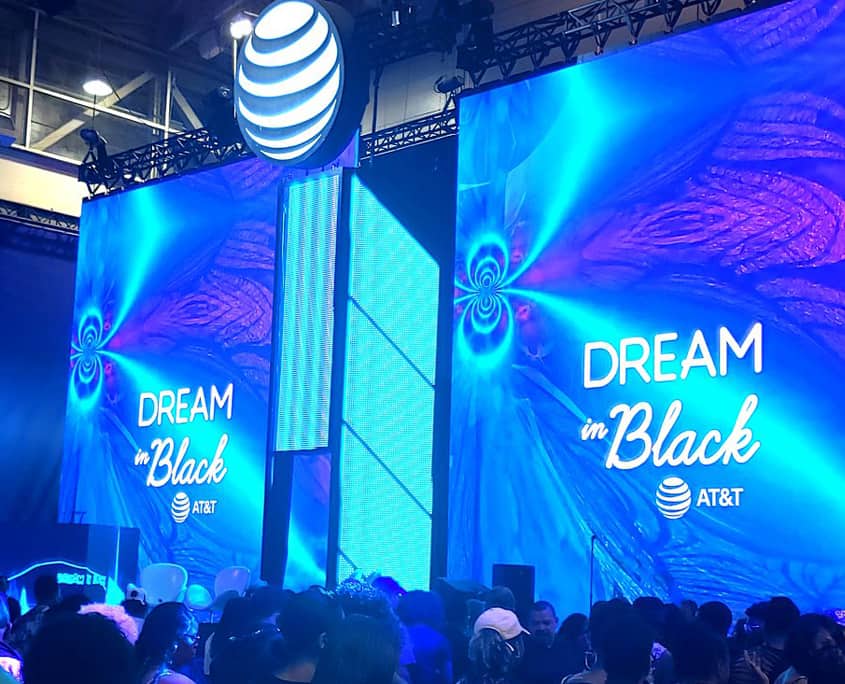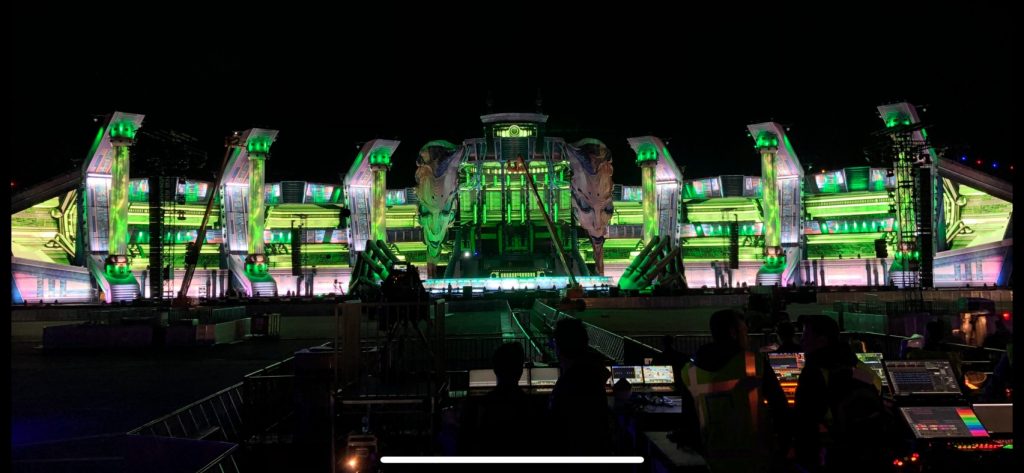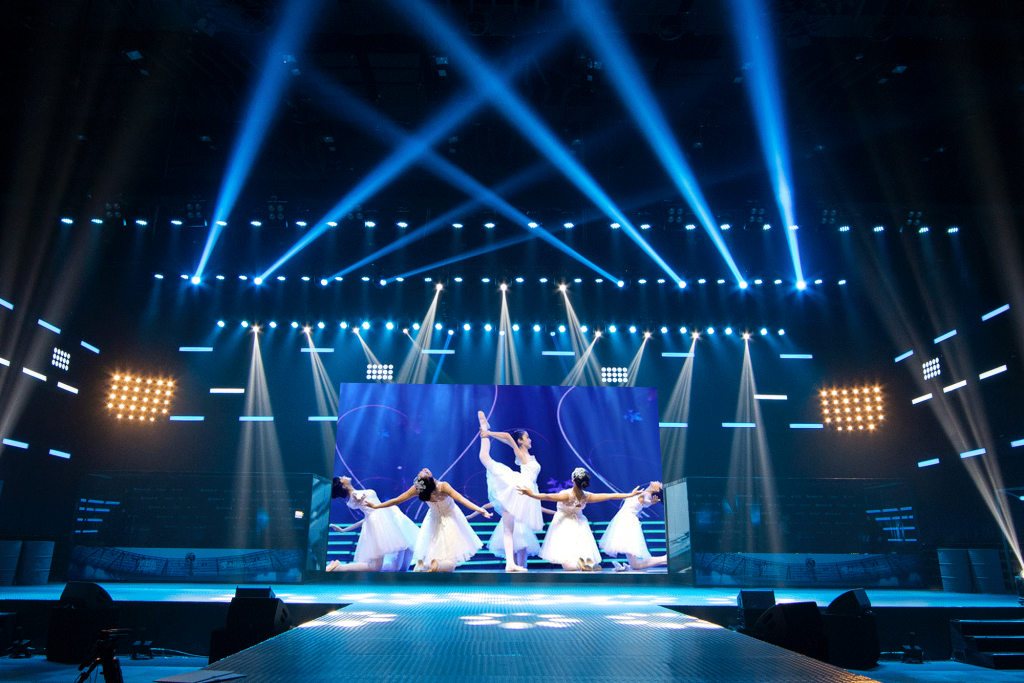Indoor full-color LED display P4 and P5 are two commonly used models. If they are viewed from a certain distance, there is not much difference. So how should we distinguish between the two? Next, let Let’s find out together.
Most of the LED displays are divided into indoor and outdoor, the use environment is different, the manufacturing cost is different, so the price will also be quite different. In a wider area outdoors.
If it is used indoors, it is generally used on a large stage, because the visual distance of P4 and P5 cannot be less than 4 meters. If you look too close, it is easy to see some small squares, and the whole effect will naturally be ineffective. Great.

If it is a close-up viewing, it is usually more suitable to use some small-pitch products. Most of the small-pitch products are between P1-P2, and the picture presented is more refined. It should be noted that P1-P2 does not mean that only P1 and There are two products of P2, but there are many different specifications in the middle, such as P1.25, P1.667, P1.875 and so on.
Having introduced so much, back to our P4 and P5 indoor full-color LED displays, the differences between them are reflected in many places, let’s talk about them one by one.
The meaning of P in the full-color LED display: P is the distance between any two pixels. For example: P3 means that the distance between pixels is 3mm, P4 is 4mm, P10 is 10mm, and the resolution and definition are different with different pixel pitches. The smaller the dot pitch, the higher the resolution and definition, so the smaller the dot pitch, the higher the price.
The pixel density of each square is different. P2.5 has 160,000 pixels per square meter, P3 has 111,111 pixels per square meter, P4 has 62,500 pixels per square meter, and P5 has 1 square meter. 40,000 pixels, P6 has 27,777 pixels per square meter, P7.62 has 17,222 pixels per square meter, P8 has 15,625 pixels per square meter, P10 has 10,000 pixels per square meter, and P12 has 1 square meter. There are 6.94.40 pixels, P16 has 3906 pixels per square meter, and P20 has 2500 pixels per square meter.
The difference between the P4 and P5 LED displays we introduced here is also the pixel pitch. The P4 pixel pitch is 4mm, and one square meter can accommodate 62,500 pixels. The P5 pixel pitch is 5mm, and one square meter can accommodate 40,000 pixels. pixels, the difference between the two is 22500 pixels.

Each pixel corresponds to the lamp beads in the LED display, so the corresponding P4 uses 22,500 more lamp beads than the P5. This is why the more pixels, the more delicate the display effect. And each additional lamp bead also means that the cost increases, so the corresponding price is naturally higher.
1. Pixel composition. Because it is an indoor technology, each pixel has a wick in red, green and blue, and the dot spacing is the basis for model distinction, which directly determines the pixel resolution that a single square meter of LED display can accommodate. The point spacing technology of the P4 model is indented by 1mm, and the pixel points are increased by more than 20,000 points. (In the field of high-definition LED electronic screens, each indentation of the dot pitch is a technological breakthrough)
2. The driving method determines the brightness of the screen. At the same time, because the P5 model has fewer pixels per square meter, the brightness is higher than that of the P4 LED full-color screen. This is due to the characteristics of the LED display screen. The larger the number of points of the display screen, the higher the brightness can be, and the same can be obtained, the smaller the number of points of the display screen, the lower the brightness.

This is because if the number of points is sparser, the power supply carries fewer LED lamp beads, and even if the brightness is increased, it will not affect the display screen. But the denser the number of points, if the brightness of the LED lamp is too high, then heat dissipation will be a big problem.
If it is in a semi-outdoor or indoor position by a window, you must choose a model with a higher brightness. There are many factors affecting power consumption. The reason why the P4 indoor full-color LED display consumes a lot of power is mainly determined by the characteristics of more pixels and a brightness greater than 2200cd per square meter.
Assuming the same distance of 5 meters, the P4 and P5 will not see much difference, but if the distance is a little closer, it can be seen that the P4 display has a higher resolution than the P5 display, but The price is relatively more expensive, and the choice of P4 or P5 display mainly depends on your display viewing distance and picture quality requirements.
A special summary of the difference between indoor full-color LED display P4 and P5: A few years ago, P5 LED display led the LED display to enter the field of indoor high-definition large-screen display. To achieve the ideal requirements of 1 square meter display screen. As mentioned earlier, the resolution of P4 is really high at 25,000 points per square meter. This technological breakthrough realizes the pursuit of the effect of 1 square meter of ultra-clear display, and the LED is approaching another ultra-clear field. This is the P3, P2.5 and other ultra-high-definition displays.
Main technical parameters of P4 and P5 models:
P4 LED Display:
- Pixel composition: P4
- Dot pitch pixel: 4mm
- Density: 62500 points/㎡
- Maximum brightness: ≥2400CD/㎡
- Drive mode: 1/16 scan
- Average power consumption: 580W
- Best viewing distance: 3~40M
P5 LED Display:
- Pixel composition: P5
- Dot pitch pixel: 5mm
- Density: 40000 points/㎡
- Maximum brightness: ≥3200CD/㎡
- Drive mode: 1/8 scan
- Average power consumption: 390W
- Best viewing distance: 5~60M